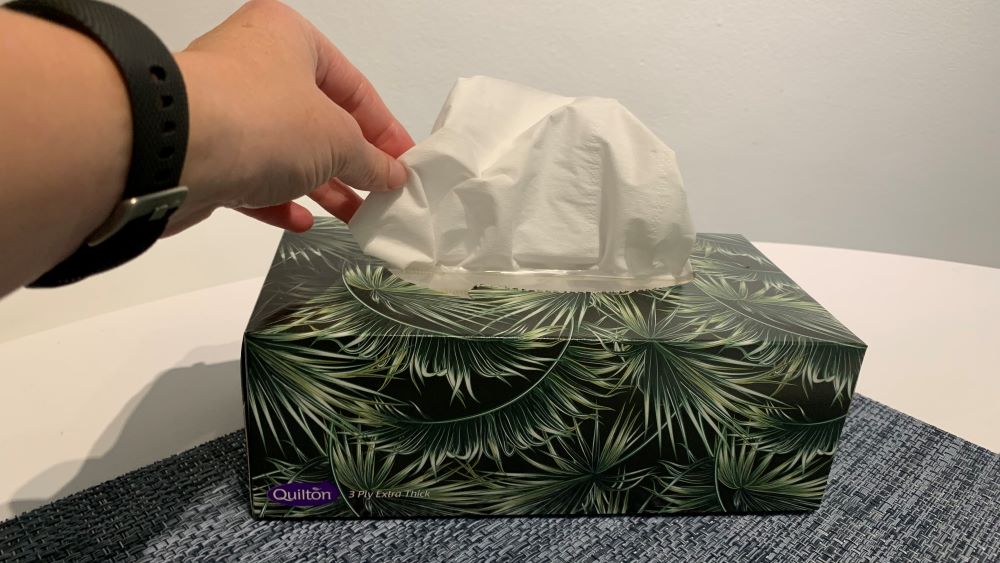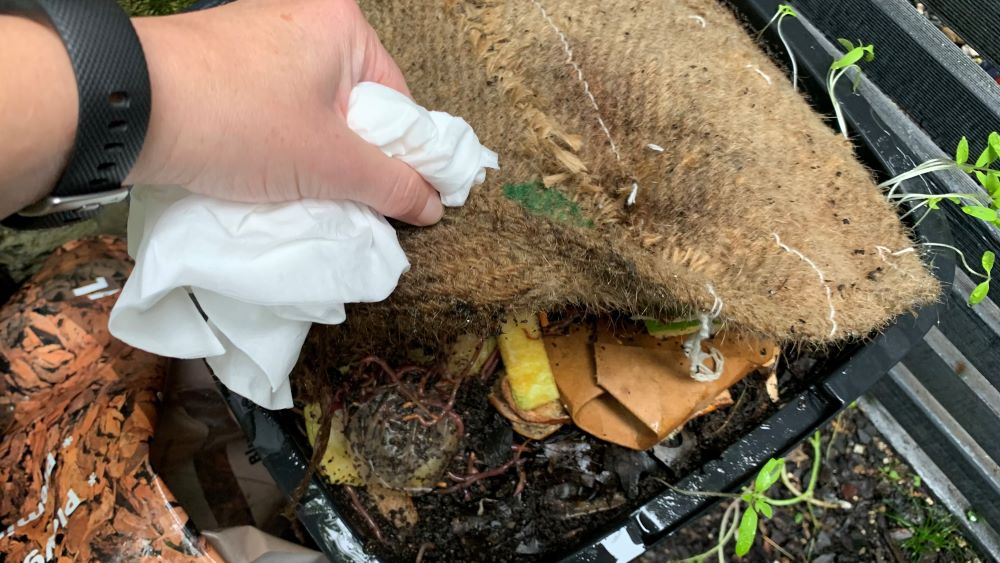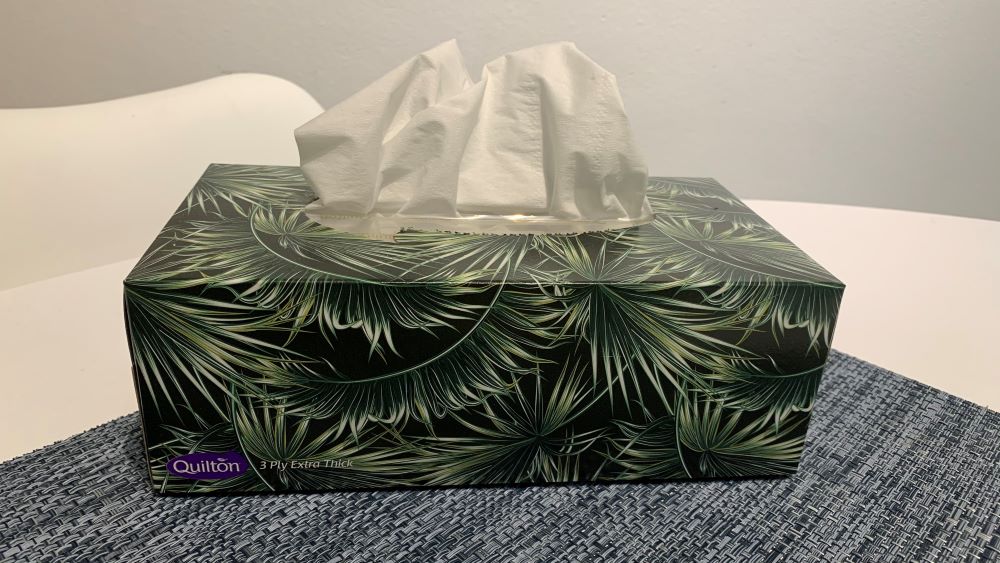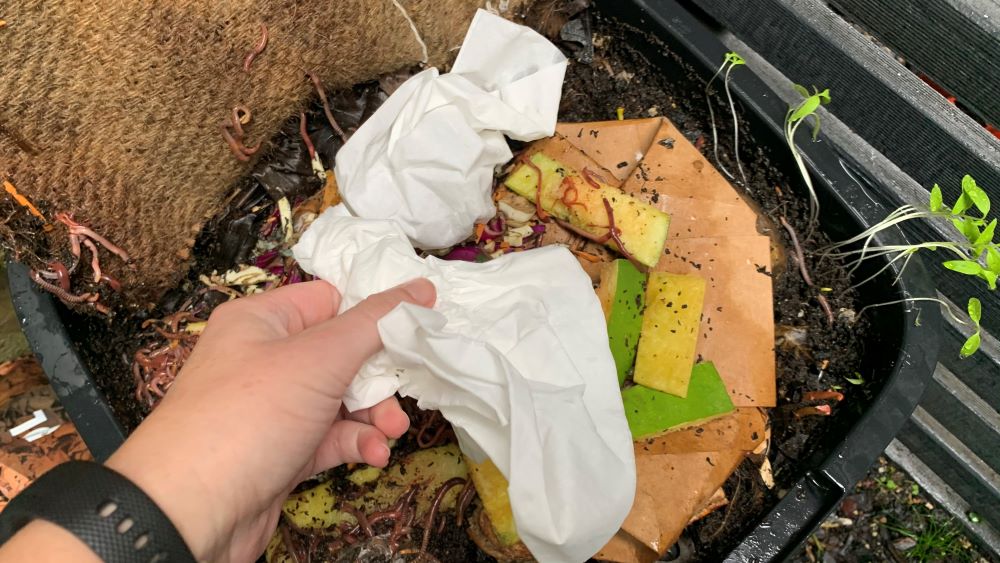If you care about the environment and you use a lot of tissues, you probably have already wondered if the product is biodegradable.
Most tissue paper is biodegradable simply because it is made mostly from wood pulp. Some tissue paper isn’t biodegradable because it has been enhanced that affect the breakdown process and stop it from breaking down. Non-hygienic fluids, oils or chemicals added to the tissues can slow down the breakdown process.

This article will explore if tissue paper is biodegradable, how to buy the most biodegradable option and what to do with them at home.
Tissue paper is biodegradable
Since 1924, when Kleenex came out with a tissue paper designed to replace the handkerchief, the popularity of tissue paper has continued to increase. In recent decades, however, more and more people are becoming concerned with the environment and wondering if tissue paper can be recycled, composted, or if it will biodegrade.

Most tissue paper is biodegradable because it is made from virgin wood pulp and flakes that come from trees cut into tiny chips. The flakes and pulp are mixed together with water and certain additives are used to soften and color the paper.
Why tissue paper is biodegradable
After this mixture is steam-heated and dried, it makes a fabric that is cut into the right shape and packaged in wrapping machines before becoming packaged for distribution. This is a short version of the process of making tissue paper, but it is a complex process that wastes water, uses lots of energy, and consists of a lot of chemicals.
The end result is simply a piece of soft paper that people blow their noses with then throw in the trash.

The good news, however, is that most tissue paper is both biodegradable and compostable. This is because tissue paper is made out of wood fibers or recycled material, as well as other natural raw materials that will decompose after a while.
When additives are used to reinforce the tissue paper, it causes the paper to take much longer to biodegrade and fully decompose – sometimes weeks or months.
How long tissue paper takes to decompose
If tissue paper is mixed with water, it can take up to six weeks to decompose. The break down process can be as fast as a day in ideal conditions to several days to decompose naturally.
Tissues placed in a highly bioactive compost bin, with lots of oxygen, moisture and soil bacteria can disappear within a day.

The time it takes for tissues to break down will depend on the moisture levels, oxygen levels, what’s on the tissue paper, how it’s made, and whether it’s left to sit alone or placed in a compost pile.
The good news is that it does eventually decompose, so you won’t have to worry about it sticking around forever.
Are tissue boxes biodegradable?
Tissue boxes will contain a combination of carboard and a small amount of plastic. If these plastic pieces are removed, it can be placed into your recycling bin. The box itself is biodegradable but is best placed in your recycling bin to turn it into something new.

Recycling tissues
Most tissues, once they they have been used is not recyclable because it comes into regular contact with grease, food waste, and bodily fluids, all of which stop it from becoming “cleaned” during the recycling process.
Clean tissues technically can be recycled but they are often lost in the recycling process. Place clean tissues in a box or paper bag so that they are sorted in with paper products and can be captured in the recycling facility.
Other ‘soiled’ products like paper plates, toilet paper, used pizza boxes and napkins cannot be recycled either. The substances on the paper product can interfere with the recycling process, will contaminate the product and prevent a new paper material from being made.
Should tissue paper be flushed down the toilet?
Tissue paper or ’tissues’ should not go into your toilet and flushed down simply because it doesn’t decompose safely while it’s in your septic system.
If you put enough tissue paper down the toilet, it can cause blockages and clogging of the pipes. Most people simply throw their tissue paper in the trash can, but if you aren’t comfortable with that thought, you can always include it as part of your home composting system, which works perfectly.
How to choose eco-friendly tissue paper
Here are some easy ways to make blowing your nose more eco-friendly.
Choose bamboo tissues
Choose a brand of tissue paper that is made from bamboo. Bamboo is a fast growing crop, that takes minimal chemicals to grow and can be harvested over and over again. They do not need to be chopped down entirely to make tissues, but the fast growing stems are harvested leaving the main plant growing well.
Choose a tissue alternative
Choose handkerchiefs which can be reused over and over again. They can be thrown in your washing machine and cleaned after use and used again. Handkerchiefs actually get softer the more you wash them and can last for many years.
Handkerchiefs are also easy to care for and are great for coughs, colds, sniffles, and much more. They are a lot more sustainable than facial tissues and come in fun colors and designs as well.
Check out how to make zero waste handkerchiefs at home in this video below.
Are Tissues Biodegradable? | Summary
Tissue paper has been around for nearly 100 years now and it’s not likely going away anytime soon. Many companies are trying to find ways to make sure not all tissue paper ends up in the landfill. While you cannot recycle tissue paper, you can certainly compost it and it can also decompose fairly quickly.

The more components put into the tissue paper as it’s being manufactured, the more likely that it will not be biodegradable. Avoid tissues with lots of additives like moisturizers, perfumes or patterns.
Avoid putting tissue in your toilet to the pipes do not get clogged and keep them out of your recycling bin.
I am an accredited practicing dietitian, experienced gardener and a dedicated cook. I love writing and sharing my experience so you can learn from my successes and mistakes.
